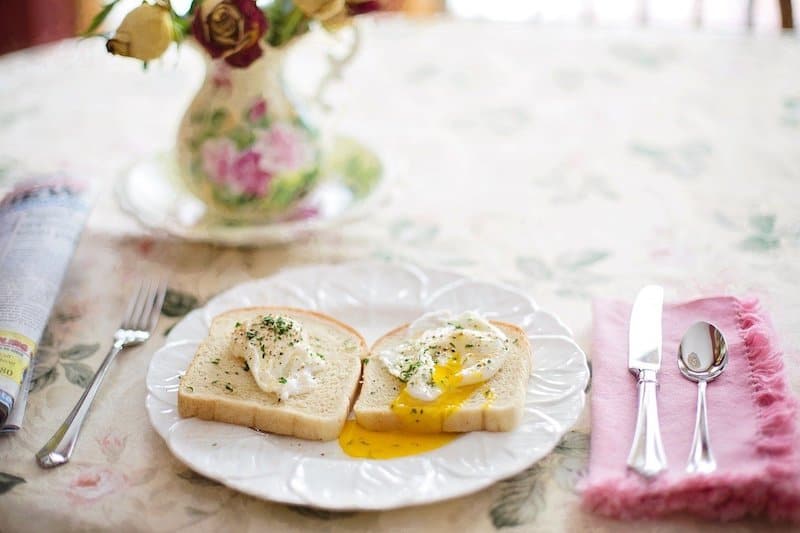Sous Vide vs Poaching
How do you like your eggs? Sous vide or poached? They certainly have a place in any kitchen, whether it’s in a restaurant or at home, and seem fairly similar to many.
While both involve cooking with liquid, food is cooked inside a bag that’s submerged in water in sous vide cooking and food is cooked directly in water in poaching. However, both cooking methods garner a reliable, delicious, and tender result.
Read on to learn more about the similarities and differences between sous vide vs poaching.
What Is Sous Vide Cooking?
Sous vide, which translates to “under vacuum,” was first introduced back in 1799 by Benjamin Thompson, Count Rumford. Essentially, it’s low temperature cooking over a long period of time. Food is placed in a Ziploc or vacuum-sealed bag and submerged in water under highly regulated temperature.
Typically, cooking times are between one to seven hours at a temperature of around 130 to 140°F for meat (this is usually higher for vegetables). The precisely regulated temperature and cooking time ensure the food is cooked evenly, retains moisture, and has superior flavor and texture, even with irregularly-shaped or thick items.
For the full details on what sous vide cooking is, click here.
What Is Poaching?
Poaching is a cooking technique in which you place food in a liquid, which can be anything from water to stock or wine, and heat it at a below-simmering temperature for a short period of time. Many chefs use this technique to gently cook delicate proteins such as eggs, fish, and chicken. Eggs are one of the most common foods people poach. However, there are lots of foods that taste delicious when poached.
Why exactly is poached food so delicious? This “moist heat” method of cooking (to compare, other moist heat methods are boiling and simmering) helps keep food succulent and tender. The short cooking time and low temperature preserve the flavor and structure of the food. Poaching became popular in the late 1800s when Charles Ranhofer, a renowned American chef, published his cookbook “The Epicurean.”
Similarities Between Sous Vide and Poaching
- Both methods require a liquid bath. However, the sous vide cooking method completely submerges the food, while poaching uses less liquid, and the chef will continuously spoon liquid over the dish while cooking. Also, the sous vide bath has to be water, while the poaching bath does not. Poached foods are often served with a sauce or reduction made directly from the bath. You can also make a sauce from the sous vide bag juices in sous vide cooking (click here to learn more).
- Both methods are gentle and produce a tender, soft, and supple dish.
- Both methods are healthy ways to cook food, with minimal fat and oil.
- Both methods do not take advantage of the Maillard reaction (the chemical reaction that involves browning food that gives it a distinct flavor).
- Both methods are foolproof in that they make it very difficult to overcook your food.
Differences Between Sous Vide and Poaching
- When you cook sous vide, the food is encased in a bag before being cooked in water. However, if you’re poaching, the food comes in direct contact with the liquid you are cooking it in. Also, the liquid used for the bath in sous vide is not incorporated into the final dish as it sometimes is with poaching.
- Poaching is a relatively quick cooking method. On the other hand, sous vide cooking takes a few hours at least and can even take up to 2 or 3 days.
- While both of these cooking methods are not easy and were once limited to the pros, poaching is a little more difficult because the food comes in direct contact with the liquid. It’s not as straightforward and is a bit more technical compared to the “set it and forget” nature of sous vide cooking.
- Poaching is done on the stove while sous vide cooking can be done with almost any container that’s large enough and can withstand high heat.
- Sous vide cooking requires lower temperatures compared to poaching. It requires a temperature usually around 120 to 150°F for most foods, while poaching temperature is usually around 160 to 180°F.
Ideal Foods and Dishes for Sous Vide vs Poaching
| Ideal Foods for Sous Vide | Ideal Foods for Poaching |
|---|---|
| Chicken: Cooking chicken sous vide makes for juicy and tender chicken every time. You can even sous vide frozen chicken breasts. | Chicken: You can poach any type of chicken. However, be sure to remove the skin because it can make the liquid greasy. Poached chicken is great for chicken salad or tacos. |
| Vegetables: Vegetables are generally great for sous vide cooking. Carrots and asparagus do exceptionally well. Most people choose crisp vegetables to cook sous vide. | Vegetables: Sturdier vegetables such as asparagus, carrots, and potatoes are best for poaching. |
| Seafood: You can get awesome results cooking fish, shrimp, or scallops sous vide. With fish, just be careful when removing the pieces from the bag so they don’t break apart. | Seafood: There is a variety of seafood that comes out delicious when poached. Try cod, salmon, or fish. They are all excellent choices! |
| Steak: Steak is probably the most common piece of meat that chefs choose to cook sous vide. Afterward, give it a sear in a hot pan to get a crust. Depending on the cut, however, you may not need to cook it sous vide. Many chefs do not think it’s worth cooking with this method for a tenderloin, which is already very tender. | Fruit: Fruits with body, such as apples and pears, make for a simple yet elegant dessert when poached with champagne or cider. |
| Pork: Pork has a reputation for being bland and tough. Cooking it sous vide does wonders and makes it a sought after dish. | |
| Lamb: Lamb can be delicious and is difficult to get right as many chefs overcook or undercook it. With sous vide, you eliminate all the guesswork and it cooks to perfection. |
In Summary
Whether you’re poaching or cooking sous vide, you will end up with a tender and delicious meal. These methods, once used by professional chefs, can be used by home cooks too (given the right equipment).
Poaching is a bit more technical and will required your full attention, but it can be done much faster. Sous vide cooking on the other hand requires at least a few hours of your time to cook, but once you set everything up in the beginning, you can walk away and do whatever else you need to do while your food cooks.
I tend to think that if you’re more of a red meat eater, or a meat eater in general, sous vide is the way to go.
Interested in learning more about how sous vide cooking compares to other cooking methods? Check out these articles below:








